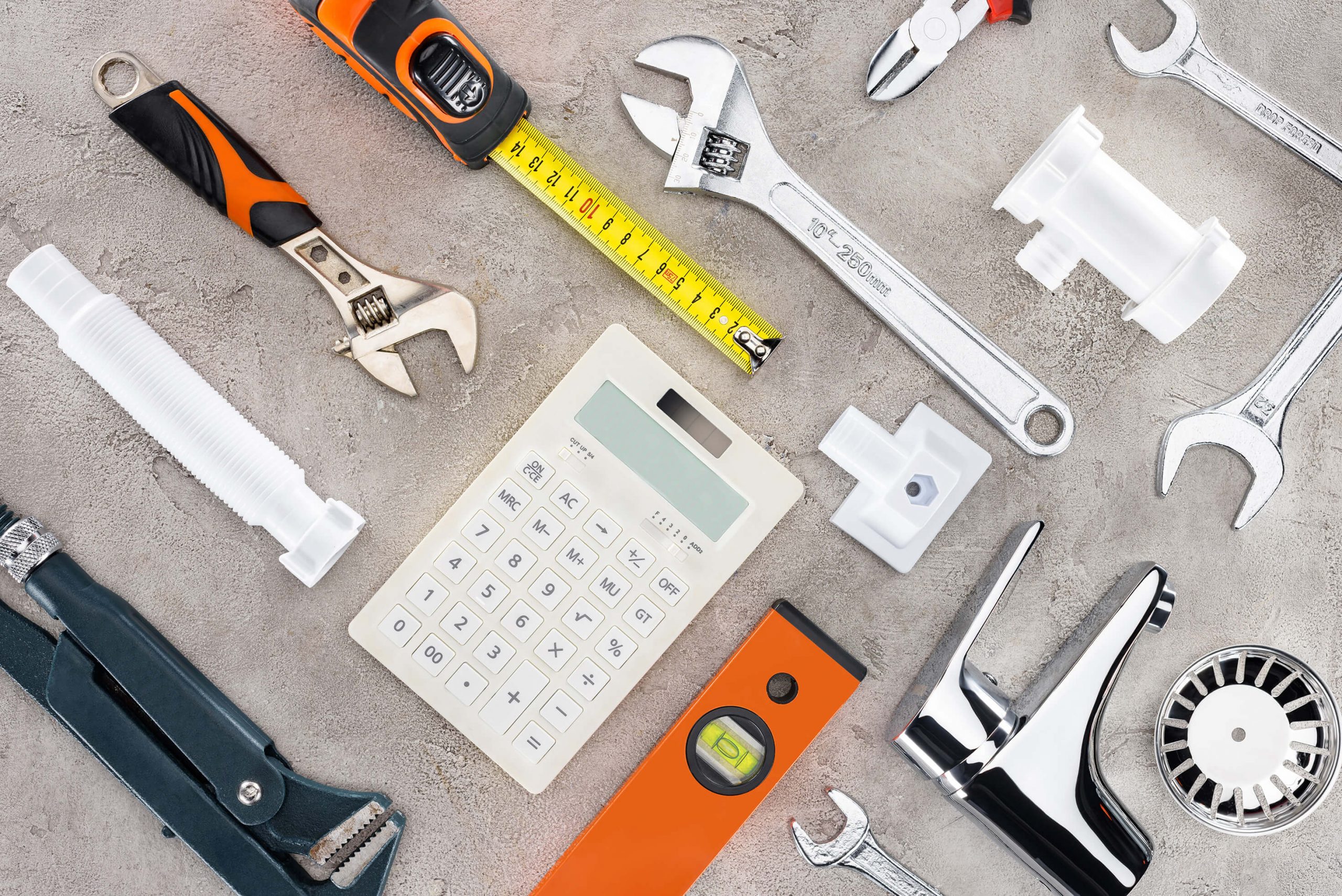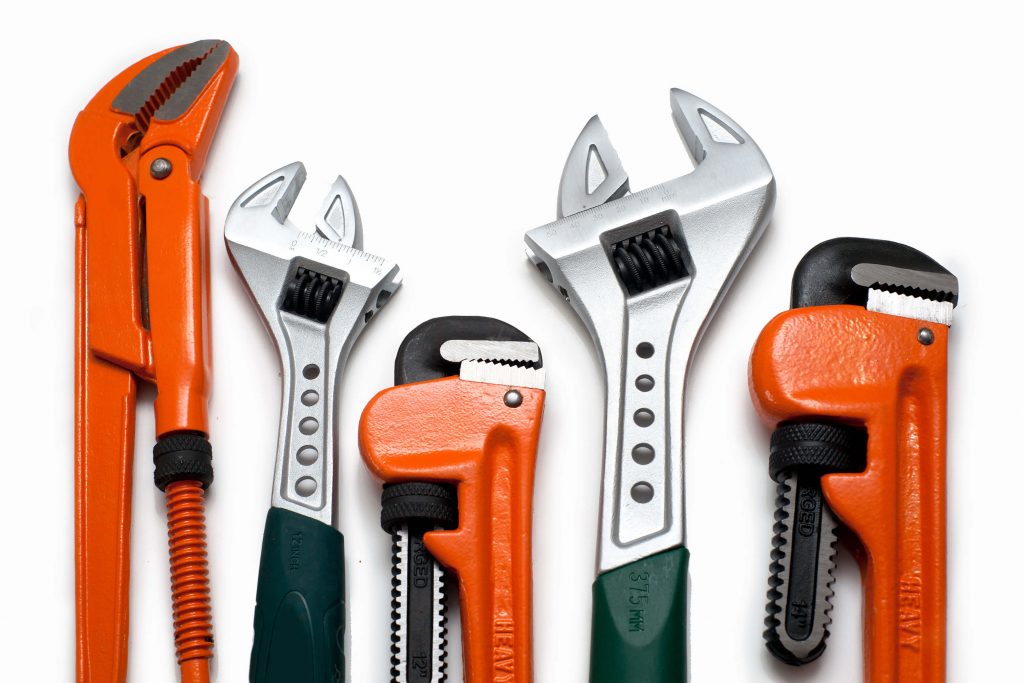10 Best Tools Every (and Only) Plumbing Expert Must Use
While you can use the plunger to deal with a blocked toilet easily, solving more serious plumbing issues should never be done on your own. After all, there’s a reason why only licensed professional plumbers with extensive training and experience should perform these tasks.
Being a professional plumber entails the use of several types of tools, some of which should never be used by people who are untrained in the trade.
This article compiles 10 of the best tools experts use to fix, maintain, and ensure that residential and commercial plumbing systems work as they should:
Wrenches
If there’s one particular category of tools that plumbing professionals are known for, it’s their wrenches. In general, these tools are used to tighten or loosen specific parts of the plumbing and sewage system.
Below are several types of wrenches commonly found in a plumber’s toolbox:
1. Pipe wrench
A pipe wrench is probably the most iconic tool plumbing experts are associated with. There’s a good reason for that.
As the name implies, this type of wrench is used to handle pipes, which pretty much sums up most of the plumbing system. Also, you should know that there are also several types of pipe wrenches, as follows:
- End pipe wrenches are for pipes that are too close to the wall.
- Compound leverage pipes are used to adjust seized joints.
- Offset pipes are assets when fixing things in areas that are tight and have awkward angles.
2. Basin wrench
Basin wrenches are T-shaped tools used when replacing or repairing a tap. It has a self-tightening, clamp-style mechanism that helps plumbers reach even narrow spaces to loosen or tighten nuts when needed.
A professional-grade variant of this tool has a telescoping shank feature that allows 90-degree positioning to ensure better accuracy.
3. Adjustable wrench
Adjustable wrenches are used for tightening or loosening hexagon-shaped nuts and pipe fittings. Like pipe wrenches, these also come in a wide range of sizes. However, most plumbing professionals only choose to have six and 10-inch wrenches.
4. Faucet key
While this is not a wrench per se, it has similar uses – to tighten or loosen parts of the plumbing system. These tiny “keys” come in an “x” shape and are used to open or close sillcocks and spigots. They also come in various models, each with a different stem fit.
Pliers
Aside from wrenches, pliers are also a common sight in a plumber’s toolbox. Although pliers and wrenches have similar uses, the former is more appropriate for dealing with smaller nuts and bolts. They are also better when it comes to adjusting fittings in narrow spaces where a wrench or the plumber’s hand cannot fit in.
Below are the different examples of pliers used by plumbing service providers:
5. Channel locks
Also called tongue and groove pliers, channel locks are commonly used in place of pipe wrenches. However, this type of pliers is best used in pairs: one to unscrew a pipe and the other to stabilize it.
6. Rib-joint pliers
This type of pliers can be adjusted according to the different sizes of pipes, nuts, bolts, and fittings. It can also be used as a kind of gripper.
Cutting tools
Cutting tools used by plumbers are mostly meant to shorten or adjust the shape of pipes and other types of hardware according to required measurements in the plumbing system.
However, what you probably don’t know is the fact that there’s a different tool appropriate for every scenario. Check out the following examples below:
7. Hacksaw
Although saws are often associated with carpenters, plumbers also have good reason to carry one in their toolboxes. Hacksaws, in particular, are used in plumbing replacements to reduce the length or modify the shape of different types of hardware to fit the plumbing system.
8. Pipe and tube cutters
Whether it is made of copper or plastic, a pipe is best cut using tube or pipe cutters. Like other tools on this list, a variety of these cutters has a wide range of applications. Every plumber has his preferences on this matter, so you probably have to ask the person to identify which one he will use.
Blockage removers
Probably one of the most common problems plumbers are asked to fix is a blocked drain or pipe. To perform this task well, they should have the following blockage removers that are used only in specific situations:
9. Hand auger
Hand augers are circular devices used to break apart blockage in a drain. It is a piece of handheld equipment that utilizes a crank mechanism attached to a cable that is dropped down the drain.
10. Snake machine
Snake machines, which are basically bigger and motorized versions of a hand auger,
are used to deal with blockages in deeper spaces. This is also the perfect tool for unblocking difficult areas that require extra power.
Expert plumbers and their ‘weapons’
Plumbing tools serve as the plumbers’ weapons in fixing and maintaining sewage and plumbing systems. Identifying what they have in their arsenal will help you, as their client, determine whether the people you hire are well-equipped for the task.
Author Bio
Based in South Melbourne, Blue Diamond Plumbing was founded in 1985, working on new homes, repairs and commercial contracts. Over time they have grown to become some of the best plumbers Melbourne has to offer. Since 2001 the company has specialized in Emergency Plumbing and Property Maintenance, Repairs and Renovations for homes and businesses in Melbourne and inner-city suburbs. Owner Rod Diamond has over 30 years of experience with emergency plumbing in Melbourne’s inner suburbs.


















